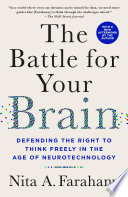

Neurotechnology is a rapidly evolving field that encompasses devices and methods designed to interface with the human brain. This includes brain-computer interfaces (BCIs), neuroprosthetics, and brain stimulation techniques. The book emphasizes the significance of these technologies in enhancing cognitive functions and treating neurological disorders. It explores how these advancements can potentially alter our perception of reality and the ethical implications of manipulating brain functions. The author argues that as neurotechnology becomes more integrated into daily life, it raises questions about privacy, consent, and the definition of what it means to be human, urging readers to consider the societal impact of these technologies.
Continue readingSocial media platforms are designed to capture attention and influence behavior, often at the expense of mental health. The book delves into how these platforms exploit neurobiological mechanisms, such as dopamine release, to keep users engaged. It discusses the addictive nature of social media and its impact on attention spans, memory, and emotional well-being. The author highlights the need for digital literacy and self-regulation to mitigate the adverse effects of social media consumption, encouraging readers to develop healthier online habits and be critical of the information they consume.
Continue readingCognitive biases are systematic patterns of deviation from norm or rationality in judgment. The book outlines various biases that affect decision-making processes, such as confirmation bias, anchoring, and availability heuristics. It emphasizes how these biases can lead to poor choices in personal and professional contexts. By understanding these biases, individuals can develop strategies to counteract them, leading to more rational decision-making. The author provides practical tips on recognizing biases in oneself and others, fostering a culture of critical thinking and informed decision-making in organizations.
Continue readingArtificial intelligence (AI) is not just a tool but a transformative force that can shape human cognition. The book examines how AI technologies, such as machine learning and natural language processing, can enhance or hinder cognitive abilities. It discusses the implications of relying on AI for tasks traditionally performed by humans, including problem-solving and creativity. The author argues that while AI can augment human capabilities, it also poses risks of dependency and diminishing cognitive skills. The need for a balanced approach to integrating AI into daily life is emphasized, advocating for ongoing education and adaptation to these technologies.
Continue readingThe practice of mindfulness is presented as a countermeasure to the overwhelming stimuli of modern life, including technology and social media. The book discusses the benefits of mindfulness in enhancing mental resilience, reducing stress, and improving overall well-being. It provides insights into various mindfulness techniques, such as meditation and focused breathing, and their positive effects on brain function. The author encourages readers to incorporate mindfulness practices into their daily routines as a means to foster greater awareness and control over their mental states, ultimately leading to improved cognitive performance.
Continue readingAs neurotechnology advances, ethical considerations become paramount. The book explores the ethical dilemmas associated with brain enhancement, privacy concerns, and the potential for misuse of neurotechnological tools. It raises questions about the regulation of these technologies and the responsibilities of developers and users. The author calls for a proactive approach to ethics in neurotechnology, advocating for inclusive discussions that involve diverse stakeholders. This ensures that the development and application of these technologies align with societal values and contribute positively to humanity.
Continue readingThe book concludes by envisioning the future of human-technology interaction, emphasizing the need for a harmonious relationship between humans and machines. It discusses the potential for technology to enhance human capabilities while warning against the risks of over-reliance. The author encourages readers to embrace technology as a partner in personal and professional growth, advocating for continuous learning and adaptation. The future, as portrayed in the book, hinges on the ability of individuals and society to navigate the challenges posed by emerging technologies while leveraging their benefits.
Continue reading